Best jazz guitars 2025: Recommended electric guitars for playing jazz
From Gibson to Guild, Ibanez to D’Angelico, we’ve got jazz guitars for all budgets and abilities and everything you need to find the right one for you
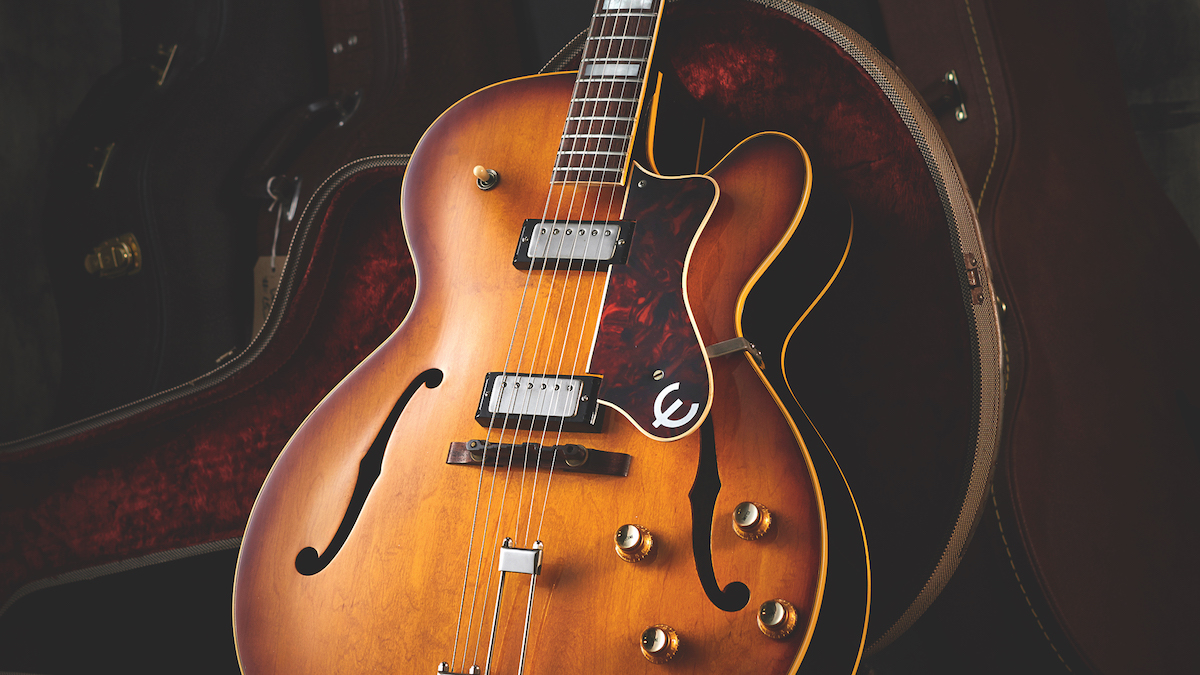
How do you define what makes the best jazz guitars? That’s a question for the ages. Perhaps any good electric guitar could do the job, as long as it wasn’t fitted with nuclear-powered humbuckers. Why not, right? Jazz is a style, a sensibility. But it’s also a sound, and even in the improvisational fiefdom of jazz guitar, there are rules – or at least conventions – that have guided the hand of manufacturers and players over the years.
When we think about the jazz guitar, we think of a hollowbody or semi-hollow design. We think of an organic, acoustic earthiness that comes alive when played through a guitar amp. There is an almost piano-esque attack, with a little trebly sharpness to articulate often complex phrases. Maybe that’s the key to a great jazz guitar – finding that balance between the acoustic qualities of a semi-hollow or hollowbody build, and the clarity of an electric guitar; between warmth and precision.
In this guide we feature the best guitars for jazz, covering all budgets and styles, from the traditional to the contemporary. If you want to get straight to our top choices, keep on scrolling. If you would like a little more guidance, hit the buying advice button above.
Best jazz guitars: Our top picks
You could throw a dart at the D’Angelico hollowbody catalogue and come up trumps with a top-quality archtop for jazz. But the D’Angelico Excel EXL-1, a largely faithful contemporary take on John D’Angelico’s original flagship jazz box, gets our vote. There’s an acoustic openness to it, an evocative tone grounded in a bygone era. It’s great value, too.
Epiphone is enjoying the hot streak of hot streaks, but amidst the fanfare for the return of the Casino and Riviera models, don’t let the Epiphone Broadway slip between the cracks. A sweet-looking jazz electric, finished with multi-ply binding and plenty of TLC, it wears its traditional aesthetic well, while offering a contemporary performance via its SlimTaper neck.
Best guitars for jazz: Product guide
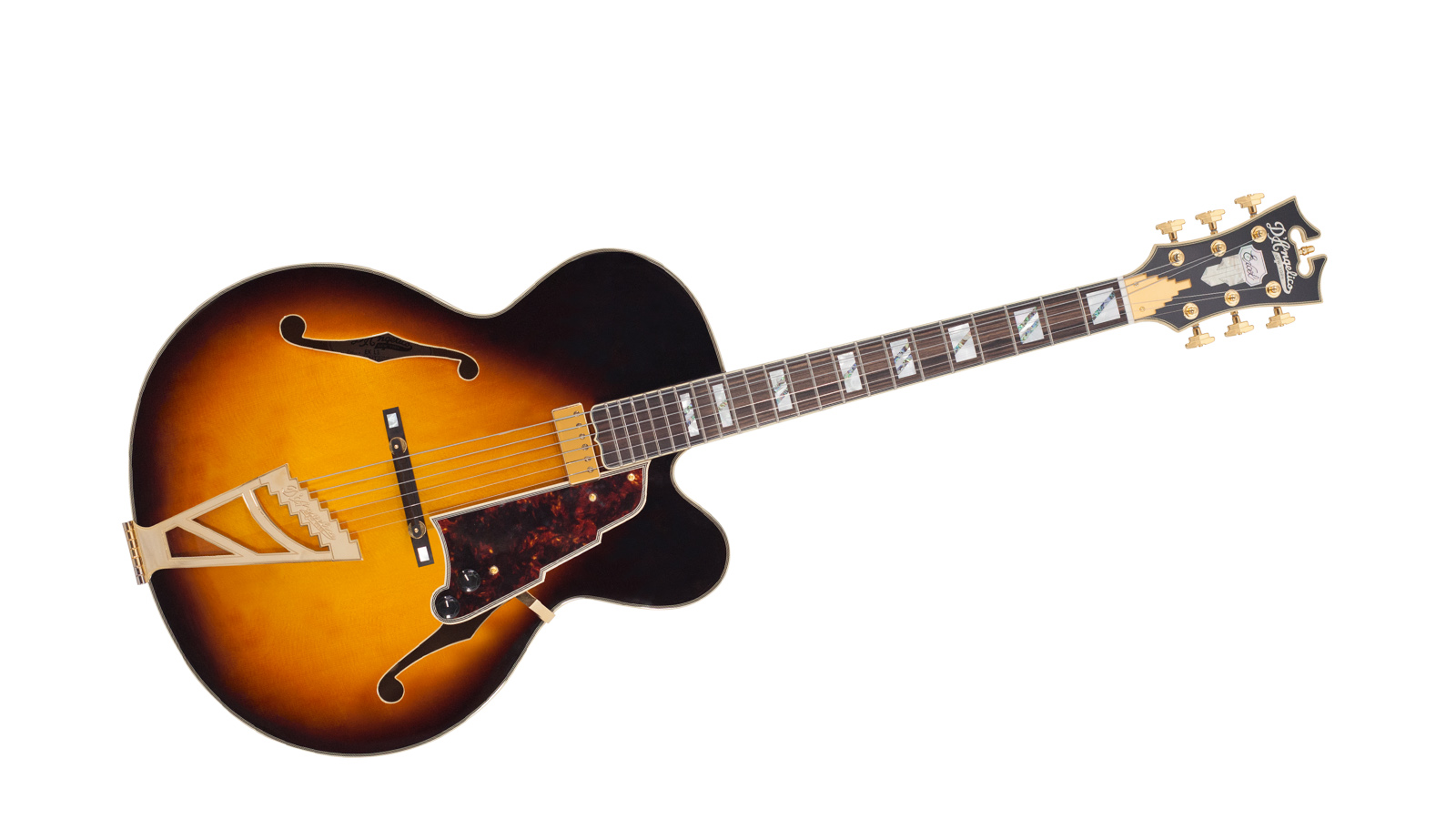
1. D’Angelico Excel EXL-1
Our expert review:
Specifications
Reasons to buy
Reasons to avoid
A D'Angelico guitar carries with it the weight of history. John D’Angelico was there at the start, building archtops that soundtracked the jazz age. The Excel EXL-1 is made in South Korea and is generously proportioned, with a neck that’s of a more refined era. Ostensibly it’s a C-profile, but there’s an asymmetric feel to it – just like the originals, made when hand-carving would naturally lend itself to such player-friendly ergonomics. If you’ve played the EX-SS, a superb semi in its own right, you’ll know what we’re talking about.
Played acoustically, the Excel EXL-1 gives you a taste of things to come with a forthright character that might lack volume but not attack. When you put the guitar through an amp, that directness mellows out a little, the tone more magisterial. It’s like the dimmer switch on the light has been turned down a tad, and when you take off some of the treble, a bell-like voice gives chords and note-heavy passages a remarkable level of musical detail.
The aforementioned EX-SS is a little more modernistic and arguably more versatile. But for the business of playing jazz and jazz alone, for reproducing traditional styles and putting a modern twist on them, it doesn’t get any better than the Excel EXL-1. Not at this price.
Read the full D’Angelico Excel EXL-1 review
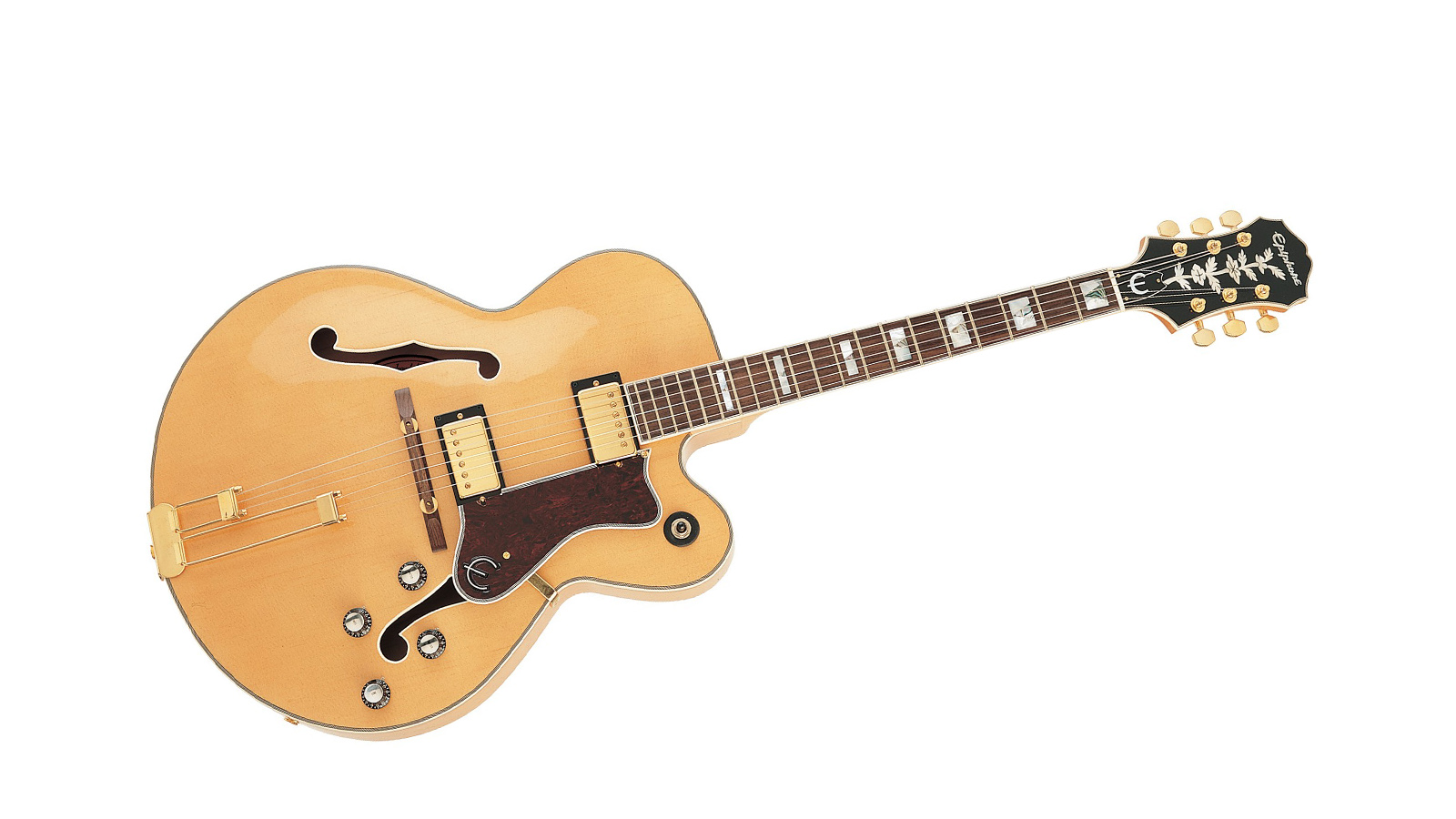
2. Epiphone Broadway
Our expert review:
Specifications
Reasons to buy
Reasons to avoid
The Broadway name dates back to 1931, when Epi Stathopoulo was making non-cutaway acoustic archtops to soundtrack good times with swing beats, but it was not until 1958 that it was released in its single-cutaway electric form. Early versions were equipped with New York single coils, but, as with the Coronet, Epiphone ran out of stock at the beginning of the 1960s and used mini-humbuckers instead, and these would remain on the Broadway until it went out of production in 1969.
The reissued Broadway – which has been out since the late ’90s – is a slightly different proposition. Some might even say it’s an improvement. It has full-sized humbuckers, the V-profile neck of the early models has been updated with a SlimTaper C-profile, and the body is a wee bit thinner (but still a roomy 17”/431mm wide).
Despite these modern updates, it presents a sensational taste of old-school guitar-making at a very attractive price. It’s more luxurious, with seven-ply binding around the body, and multi-ply binding around the neck and headstock – the latter decorated with a pearloid ‘vine of life’ inlay. This, combined with the gold hardware, the Frequensator tailpiece and a tone that spreads hot butter on any chord you care to play on it makes the reissued Broadway one of the best jazz guitars you can buy today, with the SlimTaper neck a more palatable proposition for speedy, note-heavy runs.
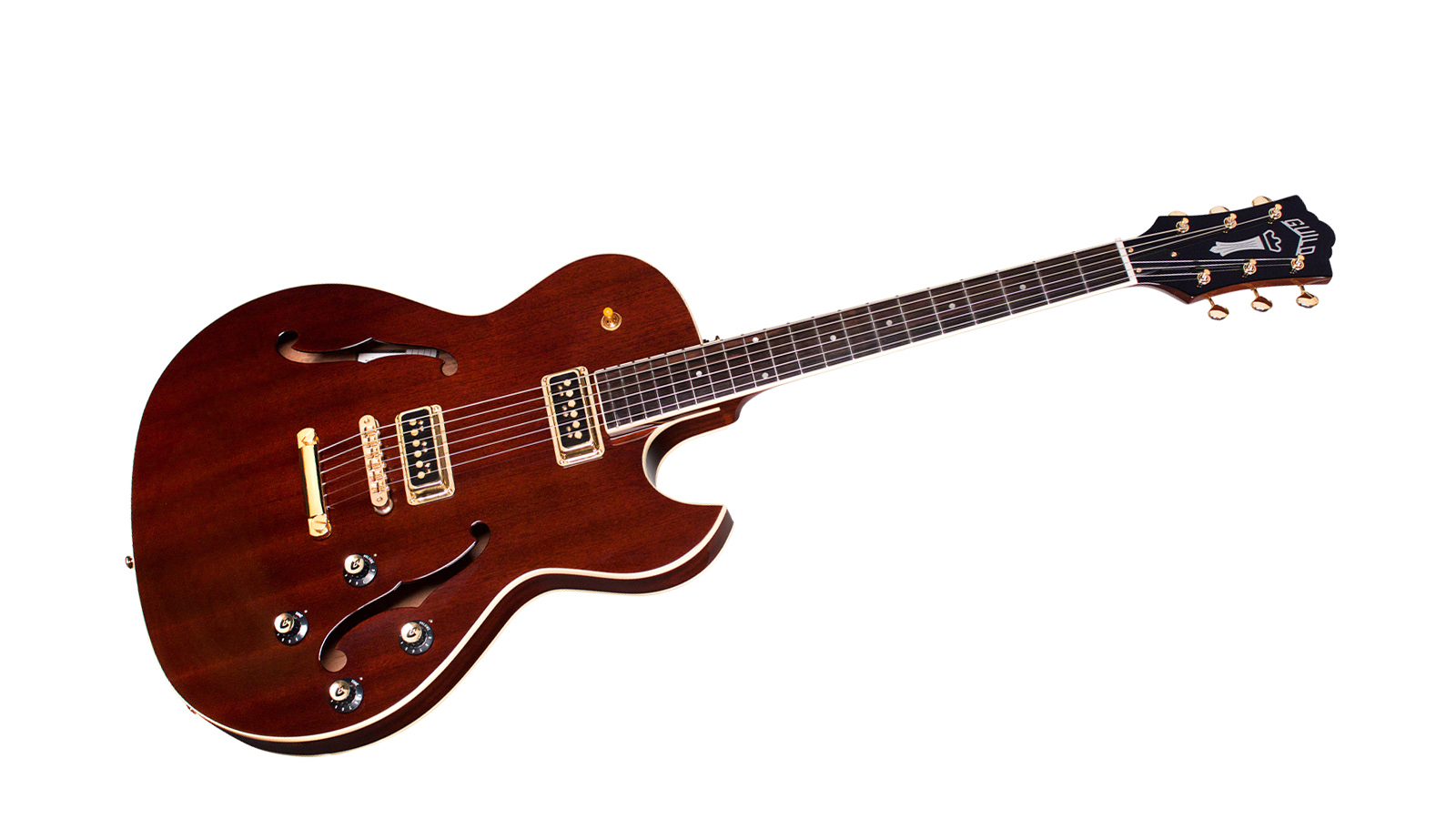
Specifications
Reasons to buy
Reasons to avoid
The DeArmond Dynasonic pickups that give this guitar its name date back to the foundational era of rock ’n’ roll – and the Starfire II ST is equally at home in that genre as it is playing jazz. With roundwounds, some drive, spring reverb, slap-back and tremolo to give the tone depth and movement, it’s a formidable choice for rockabilly high-jinks. It makes a fine blues guitar, too.
Jazz fans need only park themselves at that neck pickup, adjust the tone for seasoning, and they’ve got themselves a stylish and playable semi-hollow with a thinline design. We would like to see a few more finish options – and a case will cost you extra – but the Starfire II ST is one of our favourite retro-inspired electrics of recent years, and further evidence that Guild is on a hot streak right now when it comes to quality and value.
Read the full Guild Starfire II ST Dynasonic review
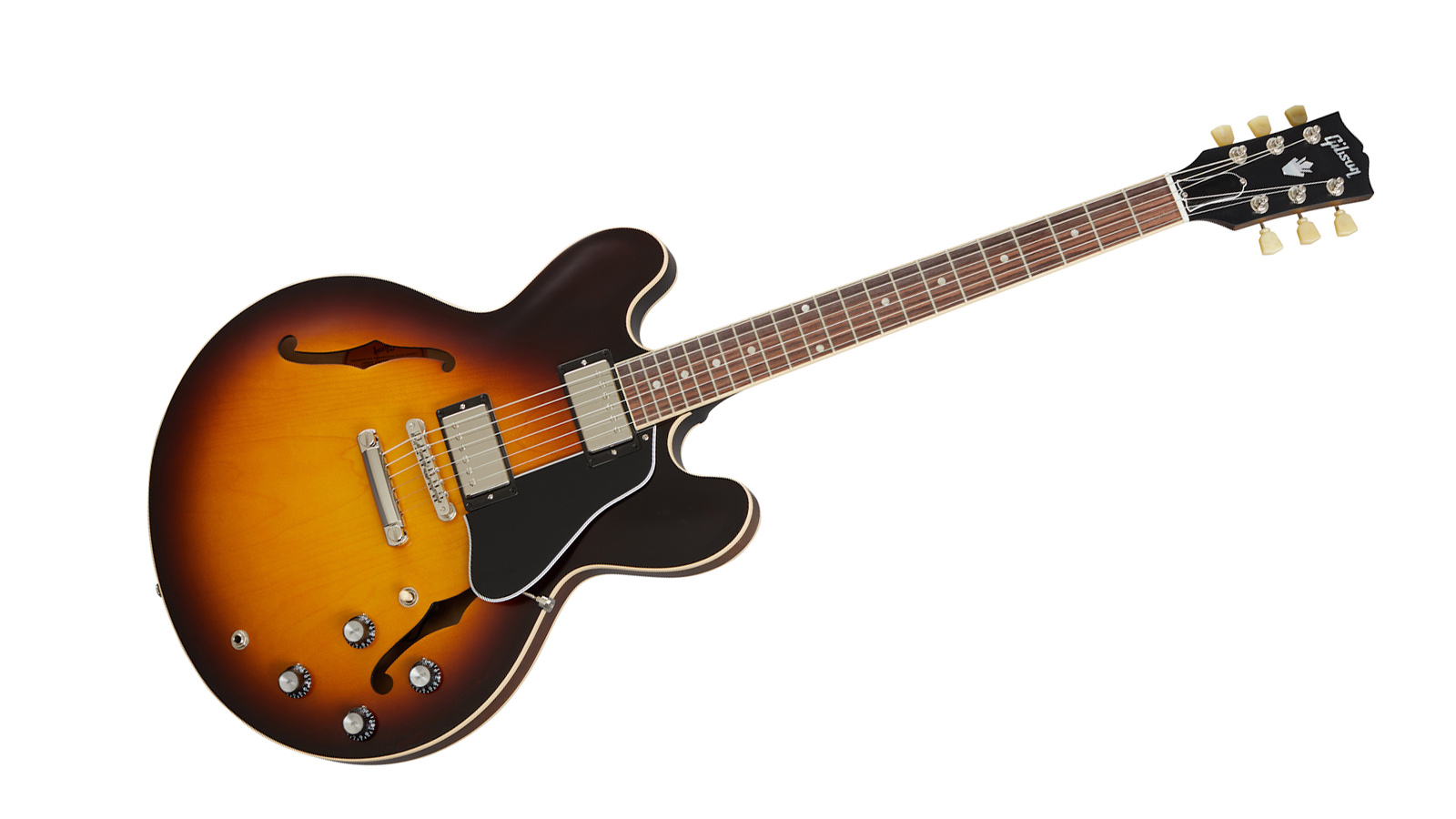
4. Gibson ES-335
Our expert review:
Specifications
Reasons to buy
Reasons to avoid
Does anyone need more reasons to buy an ES-335? It’s one of the foundational designs of electric guitar – the archetypical ‘electric Spanish’, with the pioneering centre-block design a means of bridging the gap between generations and making it ship-shape for the high-volume styles that came out of the 1950s. And now, it remains as relevant as ever.
You can usually judge a guitar design by the imitations that followed in its wake, and there has scarcely been a more copied design than the ES-335. This era’s version has a three-ply maple/poplar/maple build housing a pair of calibrated T-type humbuckers that are voiced with warmth in mind. Controlling this is a hand-wired circuit that features high-quality 500k pots and orange drop capacitors, effectively guaranteeing that the time-honoured Gibson setup of two volume, two tone and a three-way selector operates as a comprehensive onboard EQ. With that, you can make this a rock ’n’ roll guitar, a hard-rock powerhouse (as Ritchie Blackmore did in the early Deep Purple days), a blues machine or, befitting the subject of this buyer’s guide, a jazz guitar with few peers. The rounded C-profile is for grown-ups, and offers a super-comfortable seat for chords and lead playing alike.
It’s not cheap but then it’s not supposed to be. There’s something aspirational about the ES-335. Whether you pick up a classic Satin Cherry, the blonde ambition of the Satin Vintage Natural or the Satin Vintage Burst model, electric guitars don’t get any cooler.
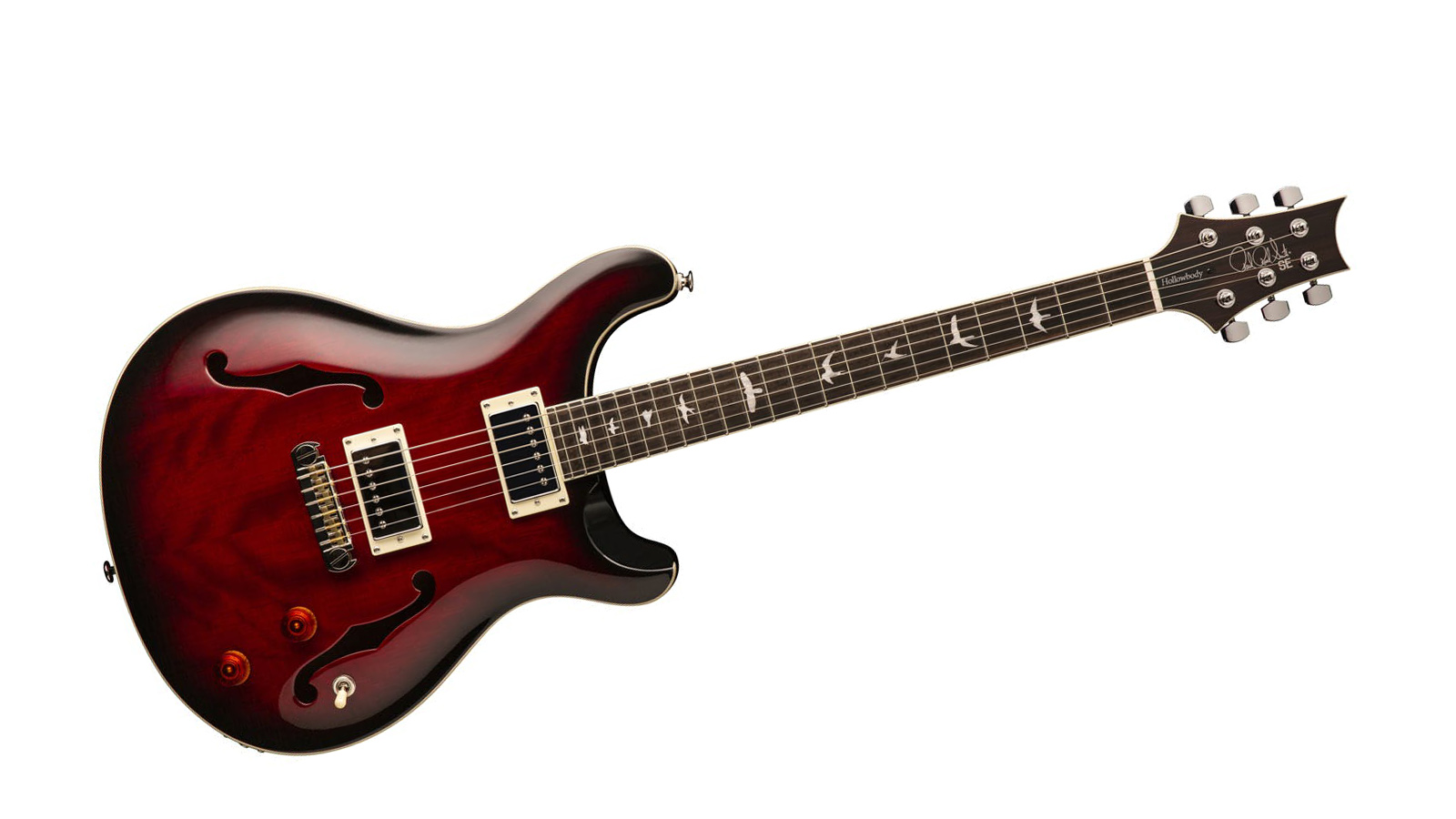
5. PRS SE Hollowbody Standard
Our expert review:
Specifications
Reasons to buy
Reasons to avoid
Paul Reed Smith isn’t necessarily the first name that springs to mind when you think jazz guitar. After all, the PRS pursuit of excellence fights on all fronts – rock, blues, jazz, even metal. Being founded in the mid-’80s also counts the manufacturer out as having been there at the beginning. And yet, the SE version of the Hollowbody Standard is a great option for the serious guitarist who wants something more from their jazz guitar.
In a sense, you could think of it as an all-original design that performs a similar role to the ES-335. It’ll work gangbusters for rock and blues, and that hollow construction allied to the superlative 58/15 ‘S’ humbuckers makes it a natural for jazz excursions, offering clarity, warmth and resonance right where you need it. The fit and finish are faultless. There are options in the range, with the flame-maple-capped Hollowbody II available for a few dollars more. It also makes an excellent first hollowbody for those migrating from solid builds.
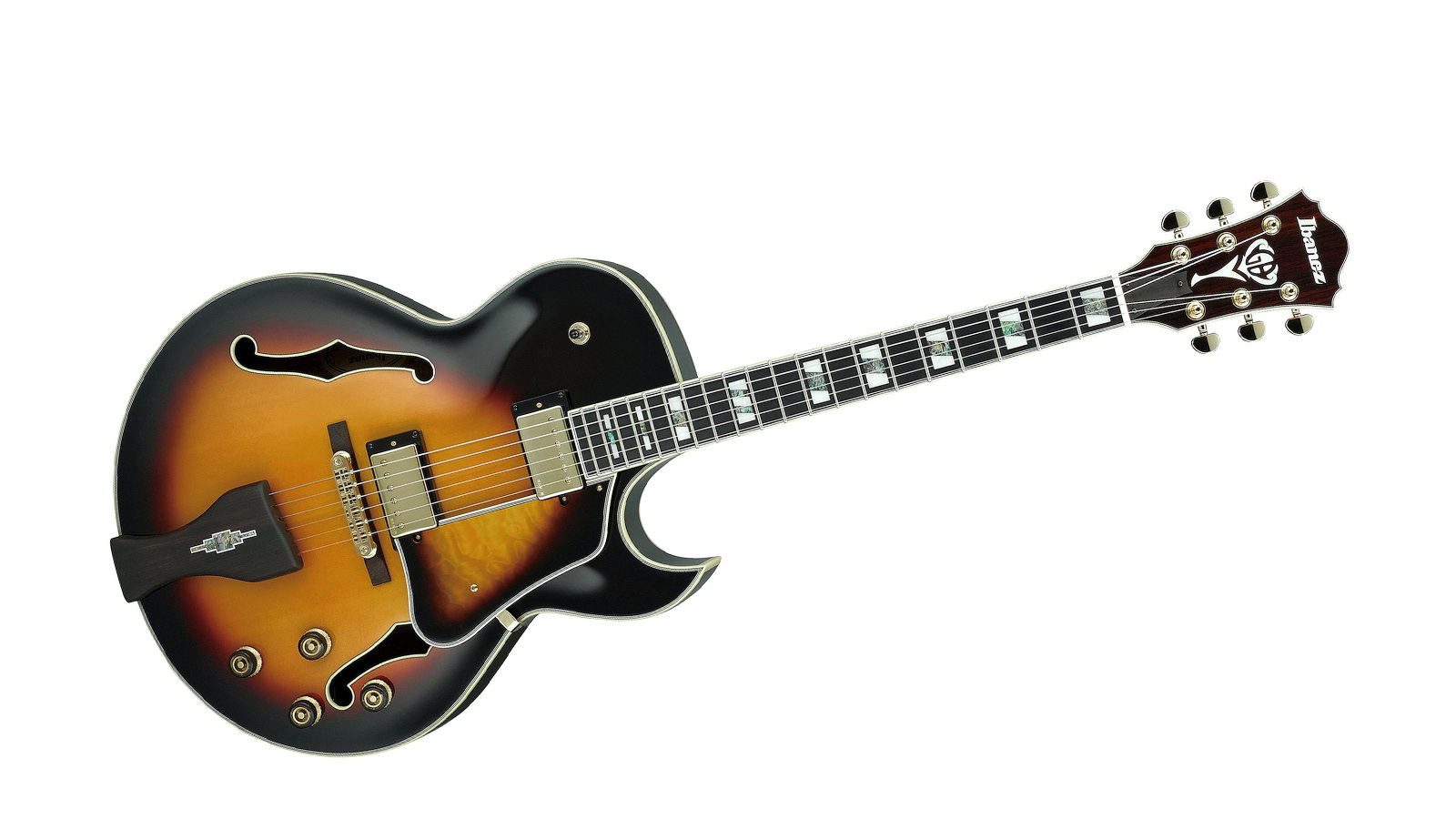
Specifications
Reasons to buy
Reasons to avoid
The wonderful George Benson was Ibanez’s very first high-profile endorsee, and the two parties have enjoyed a happy and fruitful union for over 40 years now. The LGB30 – aka the ‘Little George Benson’ – is one of the more affordable of the chart star’s signature models, representing an excellent opportunity for a first serious jazz guitar.
The LGB30 can also do a neat line in blues and rock ’n’ roll tones, but with a good set of flatwounds it comes alive as the quintessential jazz guitar. It might have George Benson’s initials in its name, but it’s a signature model that invites you to impress your personality upon it.
It’ll cover all eras of jazz. Through a small Fender tube combo, the neck pickup is robust and rounded, warm and musical. But at the bridge and with the treble pulled forward, you can summon some bright chime to find your place in the mix. It looks and sounds more expensive than it is.
Read the full Ibanez LGB30 review
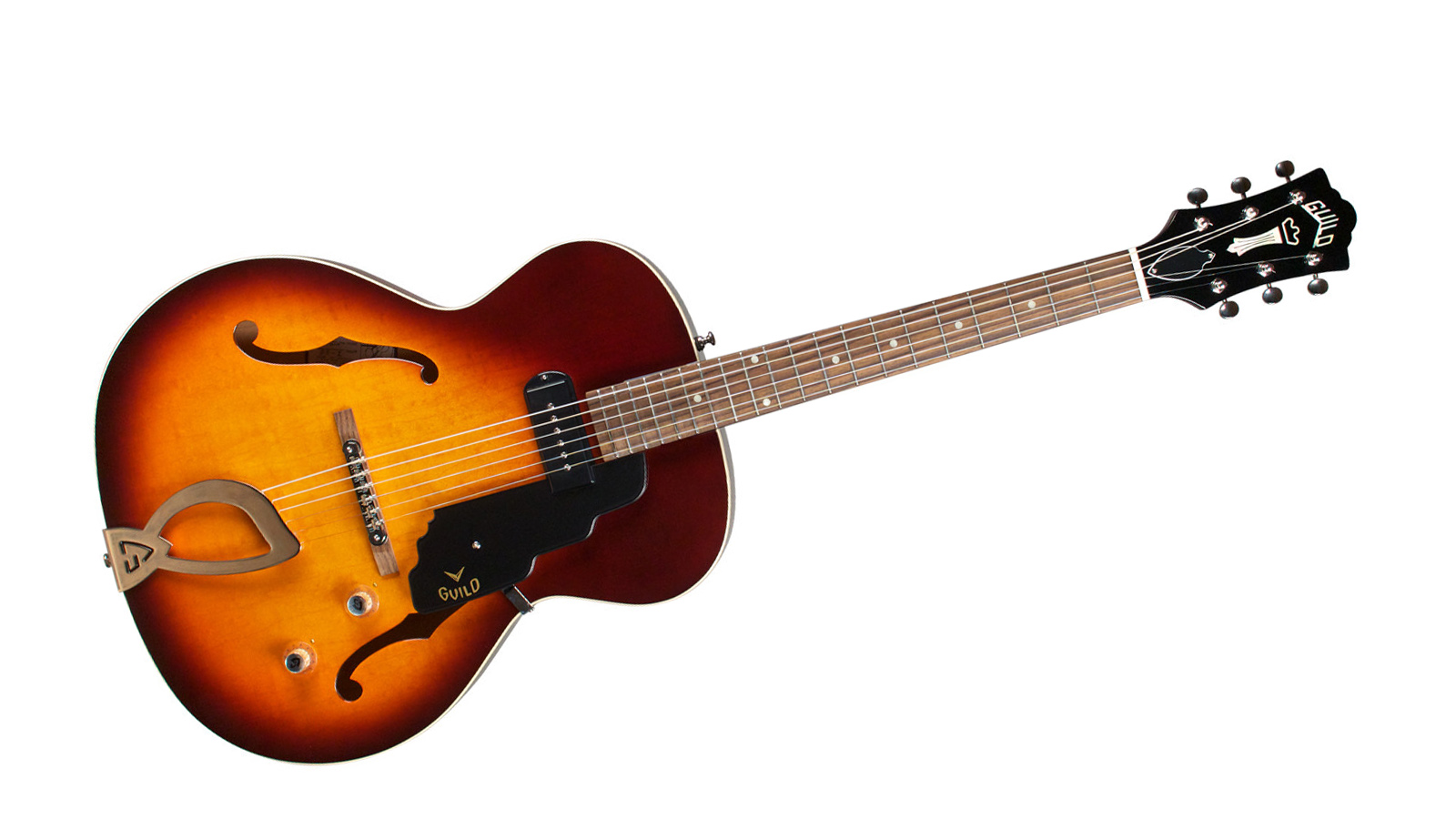
7. Guild T-50 Slim
Our expert review:
Specifications
Reasons to buy
Reasons to avoid
The only non-cutaway model in Guild’s mid-priced Newark St Collection, the T-50 Slim is a thin-body archtop straight out of the old school. It looks like it was cashing its pension long before the colour TV arrived in people’s homes. But, in fact, this is inspired by a child of the ’60s, the T-50 – albeit with the depth shrunk to 1.75”/44mm.
Purists will love the stylings. And the sounds? Well, a single low-output dog-ear P-90 in the neck offers just enough pep to articulate each note in your chord, its wide-bobbin design and alnico V-magnet ensuring there’s a bit of glassiness in what is inherently a warm ’n' woody, organic tone.
The lack of a cutaway makes this a bit of a challenge for the more extravagant lead players, but that vintage soft U-profile is super-comfortable. Allied to the slimline body, it’s a delight for comping.
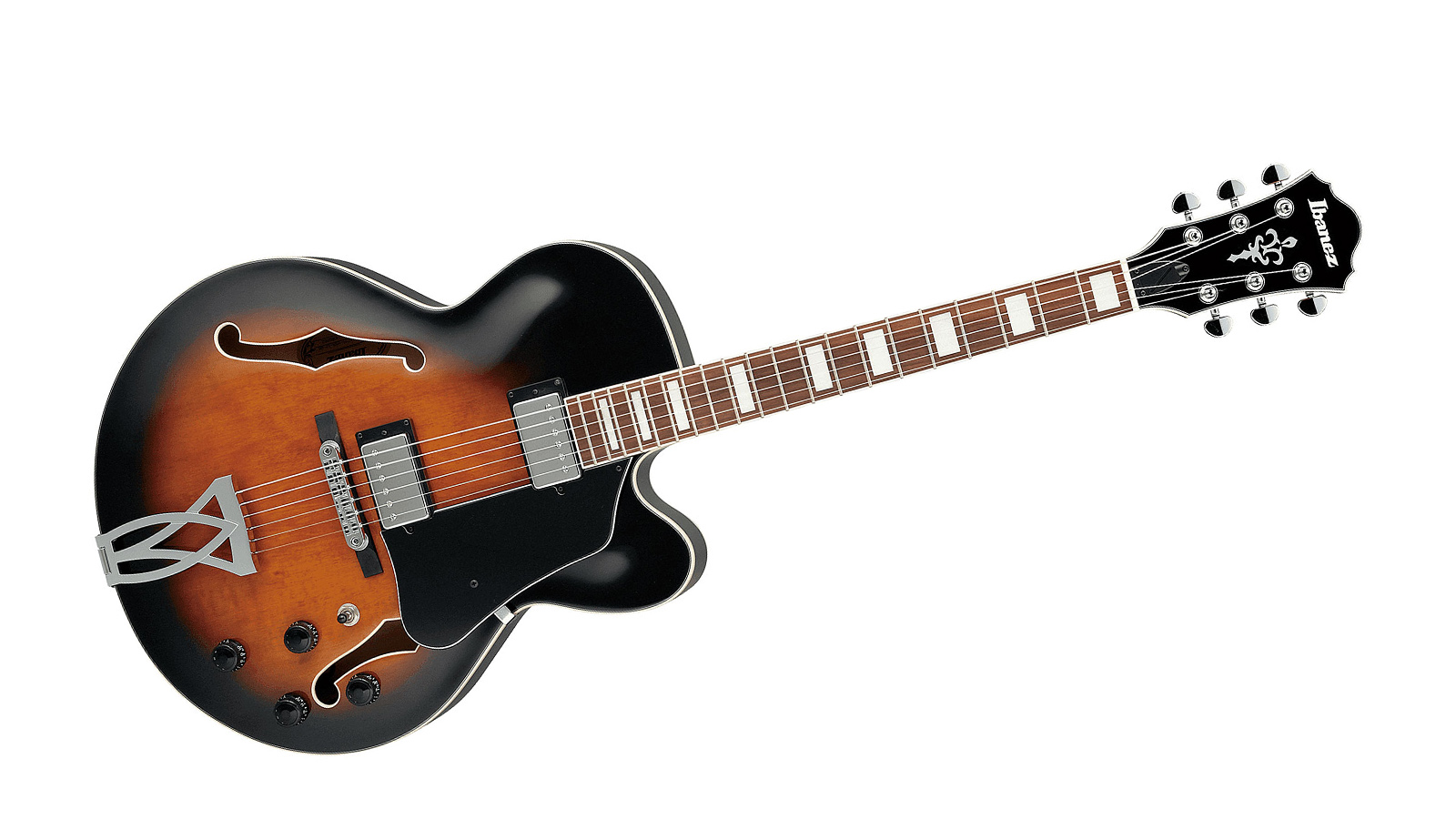
8. Ibanez Artcore AF75
Our expert review:
Specifications
Reasons to buy
Reasons to avoid
In terms of modernity, the AF75 is about as far away as you can get from Ibanez’s more famous shred-ready designs. But this traditional jazz box is constructed with similar ideals. The 21mm neck depth at the first fret tapers out nicely to 0.9”/24mm at the ninth – perfect for wrapping your hand around a chord, and very comfortable.
The Classic Elite humbuckers make the AF75 a versatile proposition, and if you can work it so that the feedback isn’t too much of an issue at high volumes, this will do a turn playing rock sets. But at this price, the AF75 presents a top-quality first hollowbody that makes an excellent candidate for modding – perhaps swapping out the neck ‘bucker for a P-90 and using something a little more vintage at the bridge? Well, it’s something to think about, because fundamentally this guitar is very impressive.
And if the traditionalism of the AF75 is a little too stuffy to throw complex chord shapes in the digital age, the slightly more expensive AF75G offers the format with gold hardware and more contemporary Black Flat and Rose Gold Metallic Flat colours.
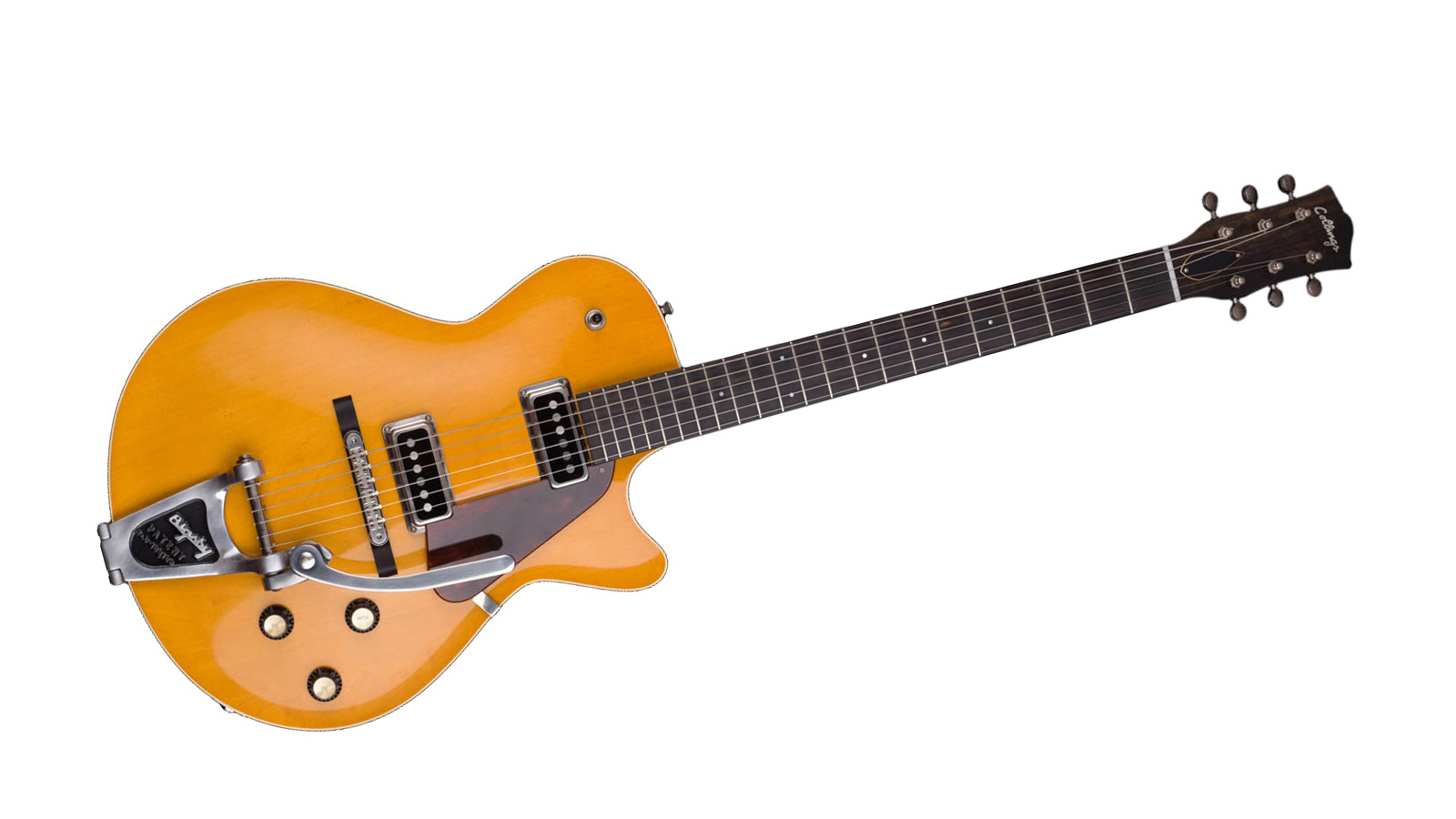
9. Collings 470 JL
Our expert review:
Specifications
Reasons to buy
Reasons to avoid
New for 2021, Julian Lage’s second signature collaboration with US boutique guitar-builder Collings shows just how inspiration and innovation can drive the design of the jazz guitar further. This fully hollow singlecut comprises a laminated maple top, solid mahogany on the back and sides, and a trestle block underneath.
Eschewing the F-hole designs, the 470 JL nonetheless has some vintage-inspired elements – most notably the pickups, which are inspired by Dynasonics and the early sound of the electric guitar, and custom-wound by Ron Ellis.
Lightweight, with a Bigsby B3, the 470 JL is the guitar you get when you’ve been playing for years and are looking for that special something. It’ll do blues and rock ’n’ roll, too, but it’s hard to think of a more desirable high-end jazz guitar in this day and age. The attention to detail would take your breath away, and it’s lovely to see a fresh design. Just don’t expect it to make you play like Lage.
Best guitars for jazz: Buying advice
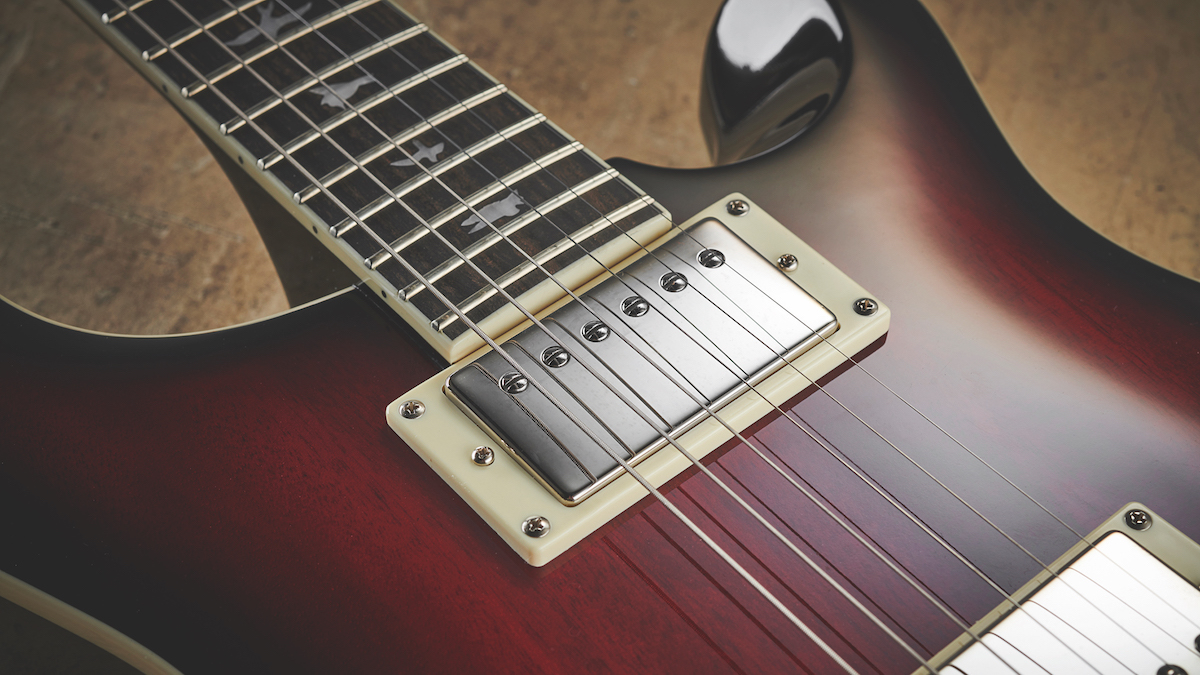
Jazz guitars: some history
MusicRadar's got your back
The electric guitar found its calling in jazz towards the end of the 1930s. A player by the name of Eddie Durham – a member of the Kansas City Six – had discovered its transformative potential, before the concept really took off when Charlie Christian joined the Benny Goodman Sextet and Orchestra, scoring a hit with Down Beat.
In Christian’s hands, the Gibson ES-150 electrified jazz guitar and foregrounded the guitar player as a band leader. It was Gibson’s first successful ‘electric Spanish’ guitar, inaugurating electric jazz guitar tone with a hexagonal blade pickup – aka the Charlie Christian pickup – close to the neck. From its non-cutaway body, it exhibited a naturally warm tone.
Would jazz history have been much different if the pickup had been placed by the bridge? Quite possibly. Gibson had the sound down. To show how little the design had changed from the acoustic archtop models, the ES-150 was marketed as having a grand auditorium body, with a carved spruce top and northern maple back and sides. Yet with ‘an entire tone generator built inside the body’, the ES-150 brimmed with possibilities.
Innovation continued apace. There was a lot yet to be done. Guitar builders such as John D’Angelico could sense which way the wind was blowing. His early archtops were inspired by the Gibson L-5, but he soon established his own style – and a reputation too. D’Angelico had plenty of offers to go to one of the big builders, but stayed independent. A stubborn New Yorker, he had everything he needed at his shop. His designs proved hard to shift, too, with his Excel EXL-1 flagship archtop remaining in production to this day.
During the 1950s, a consensus began to build. The hollow construction plus an electromagnetic pickup established a tone, though feedback remained an issue for the ES models. Gibson took various strategies, trying a thicker body for the Super 400 CES before discovering that a solid centre block would make the ES-335 resistant to unwanted squeal when playing at high volumes.
That the 21st-century jazz guitar remains wedded to the designs drafted in the 1930s, ’40s and ’50s speaks volumes about the success of those early instruments. And that success affected how players approached them in the years to come. Many used heavy strings, just as you would on an acoustic. Flatwounds were favoured for a mellower tone.
What makes a good jazz guitar?
History still guides us when looking for a jazz guitar today. Traditional styles still dominate the market. If you are an avowed jazz player, those would be better for you – a specialist player requires a specialist instrument.
But if jazz is just one of many styles in your locker, we would recommend casting your net a little further, auditioning guitars such as the Gibson ES-335 and PRS SE Hollowbody Standard, or checking out the Guild Starfire II ST Dynasonic and Gretsch hollowbodies.
Likewise for contemporary jazz. It’s unlikely that a fusion player whose style abuts progressive instrumental rock would choose a D’Angelico Excel EXL-1, but, again, there are options. The PRS SE Hollowbody Standard is a jazz guitar by stealth – or, if they were prepared to break with the semi-hollow/hollowbody paradigm and go with a solidbody, a Les Paul or an SG could be pressed into the services of jazz.
Think about the pickups you want. The warmth of the humbucker makes it a natural companion for jazz, though it’s a medium that favours low-output pickups, lest it distorts the tone. Clarity is all important, too. There’s no use in warmth, width and depth to your tone if it turns your chords to mud and your leads to wool.
The P-90, which can be found on the Guild T-50 Slim, has a tone that sits somewhere off the axis between single coil and humbucker, but its articulate, rounded heat makes it a popular choice for jazz builds. And as we’ve seen from modern boutique builds such as the Collings 470 JL, the early single-coil designs of DeArmond and co have proven the test of time. Likewise, the tonewoods and builds, where a quick scan through our list of the best jazz guitars will find a preponderance for spruce tops and maple, bright tonewood choices mellowed out a little by the hollow and semi-hollow builds.
How we chose the best jazz guitars for this guide
Here at MusicRadar, we are experts in our field, with many years of playing, creating and product testing between us. We live and breathe everything music gear related, and we draw on this knowledge and experience of using products in live, recording and rehearsal scenarios when selecting the products for our guides.
When choosing what we believe to be the best jazz guitars available right now, we combine our hands-on experience, user reviews and testimonies and engage in lengthy discussions with our editorial colleagues to reach a consensus about the top products in any given category.
First and foremost, we are musicians, and we want other players to find the right product for them. So we take into careful consideration everything from budget to feature set, ease of use and durability to come up with a list of what we can safely say are the best jazz guitars on the market right now.
Find out more about how we test music gear and services at MusicRadar.
Related buyer's guides
- Best electric guitar pickups: top-rated single-coils, humbuckers and P-90s
- Best guitar picks: top choice plectrums for acoustic, electric and bass
- Best guitar cables: guitar leads and patch cables to suit all budgets
Get the MusicRadar Newsletter
Want all the hottest music and gear news, reviews, deals, features and more, direct to your inbox? Sign up here.
Jonathan Horsley has been writing about guitars and guitar culture since 2005, playing them since 1990, and regularly contributes to MusicRadar, Total Guitar and Guitar World. He uses Jazz III nylon picks, 10s during the week, 9s at the weekend, and shamefully still struggles with rhythm figure one of Van Halen’s Panama.
“The humbuckers give it so much power and such a wide variety of tones while the destruct button really sets it apart from just about any other Tele”: Fender unveils the Mike Campbell “Red Dog” Telecaster
“This is a beautiful, well-executed Les Paul, and that’s the sort of guitar you tend to hold onto for life. That’s as sound an investment as there is”: Gibson Les Paul Standard ‘50s Double Trouble review
